One of our Standard 4 boys in boarding is a young Maasai warrior. Well, almost…he’s fifteen. Youth notwithstanding, Emmanuel possesses the graceful elegance and proud carriage inherent in all Maasai. As his teachers, we were invited to a three-day wedding celebration in his village, Ifunde.* We decked out in our finest attire, climbed into the back of the pick-up and drove until the truck could go no further. Then Emmanuel led the way through theAfrican bush to Ifunde. There are no lions here, but even if there were, we had our Maasai warrior to protect us.**
Cresting the top of some boulders, we found ourselves transported back hundreds of years to a time when the Maasai ruled this land. Resting in the shade of an acacia tree were 6 or 7 Maasai warriors clad in their full regalia: Red pattered shukas (cloth wraps), marungu (weapons) which included spears with 30 inch long iron heads crafted to kill lions, throwing clubs, and even some jewelry. These were not symbolic items. These were real. These were not merely the descendants of fierce warriors. These men are fierce warriors skilled in the warrior arts – and they are proud of it. I regret not getting a picture of this. But honestly, in spite of the fact that one spoke English fairly well and was very friendly, I was afraid to ask. The others were polite, yet aloof – and very, very serious. In lieu, I’ve included a picture from my visit to another Maasai village in Kenya in ’05.
When we arrived at the village proper, the women greeted us warmly. The men and women remain separate during these affairs. While the men congregated around a fire across the village, the women relaxed on mats in the shade of a thatched roof mud hut. Children clad in hot pink or bright purple stole shy glances as they clung to their mothers.
Others sent searing glares from their places on the mats. The young women wore maroon wraps with white trim and the married women wore blue or purple.
The jewelry was something to behold indeed! From what I could gather, the older you are, the more status you have. The more status you have, the more jewelry you wear. Ear plugs and metal hoop earrings with bangles longer and bolder than you can imagine circumvent the ears.
Metal necklace upon metal necklace, upon metal necklace adorn the neck or are worn around the waist as belts. Elaborate beadwork is worn over the necklaces and on wrists and ankles. Shiny (brass?) spiral wire begin at the ankle and extended more than half way up the calves. The jewelry provided musical accompaniment whenever they moved.
At first things were awkward. They spoke little English. We spoke little Kimaasai or Kiswahili. Hamna shida, no problem. We are women. We will always find a way. I decided to start with Emmanuel’s niece who was bouncing happily on her grandmother’s lap. Emmanuel’s mother is a wonderful woman. She always treats her son’s teachers in a warm and welcoming manner complete with handshakes and hugs. She had taught the little girl
how to give kisses and encouraged her to kiss the wazungu (white people). The next thing you know we are taking turns passing the baby around, blowing kisses and laughing, Maasai and wazungu alike.
The next obstacle to overcome was the clash between an ancient culture and an infant one. On one mat were the Maasai, a proud people living as they have for centuries. On the adjacent mat were the Americans (and one Belgian) with camera’s slung awkwardly over our shoulders. The tendency is to want to start snapping pictures right and left because you can’t believe you just walked into a National Geographic Magazine. But that is extremely rude. Would you appreciate it if someone came into your home and treated you and your way of life like a photo op instead with respect? No, and neither do they. The women were especially embarrassed to have their pictures taken (another universality). Trust me, you don’t want to piss off a Maasai – male or female.
So…I should Emmanuel’s mother how to use the camera. I don’t think she has ever looked through a camera before because she was like a child receiving her first surprise gift. I showed her where to place her eye and how to zoom in and out. I changed to my zoom lens and let her play
with that. I showed her how to press the shutter button and where to look to see the pictures she just took. She was laughing like a little kid in a pile of puppies and just having a ball! I even let the children give it a go.
Well now, the younger women were not about to be left out. Everyone was crowding around waiting her turn. We had great fun! Then one woman got the idea to have me take a picture of her and her children. That did it – all the women wanted a family portrait. In the end lots of pictures were taken and, even though I prefer candid shots, I am not disappointed.
Afterwards, I sat on the Maasai side of the mat. Using mostly hand signals I had a lovely conversation with one of the women. We managed to talk about many, many things. She was proud of the callouses on her legs made by the spiral wire and wanted me to touch them. She took off her handmade beaded necklace and let me try it on. I found it interesting that several times she felt my skin, then hers. She was obviously amazed at the fact that although we are different colors, our skin feels the same. She was particularly interested in my feet and the callouses made by my shoes. She spent quite a lot of time touching and examining every millimeter of them. I’m guessing that a callous is some kind of status symbol; I’m not sure. She was also very relieved to know that the freckles (alright, now they’re age spots) on my arms were not a disease, but just a wazungu oddity. In the end, she told me I was her daughter. Quite an honor, I assure you.
Later that night we walked back down the moonlit path and rode home in the back of the truck. As I gazed up at the Southern Cross, the warm night breeze on my face, the full impact of what had happened hit me. This woman from a culture that tenaciously clings to its traditional ways had intentionally reached through the crack in the door to touch my life and to let me touch hers.
No Difference
Small as a peanut
Big as a giant,
We’re all the same size
When we turn off the light.
Rich as a sultan
Poor as a mite,
We’re all worth the same
When we turn off the light.
Red, black or orange.
Yellow or white.
We all look the same
When we turn off the light.
So maybe the way
To make everything right
Is for God to just reach out
And turn off the light!
Shel Silverstein, Where the Sidewalk Ends
*The traditional Maasai land spans the border between Kenya and Tanzania (includes the Maasai Mara), so many Maasai have a long way to walk in order to attend a celebration in another village. Due to our responsibilities at school, we could only attend the first day.
** The Lion Hunt is a Maasai rite of passage. http://www.maasai-association.org/lion.html

The small children get to eat first.





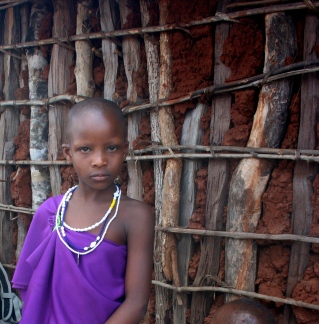





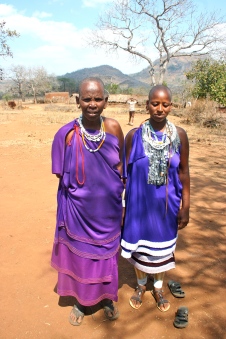


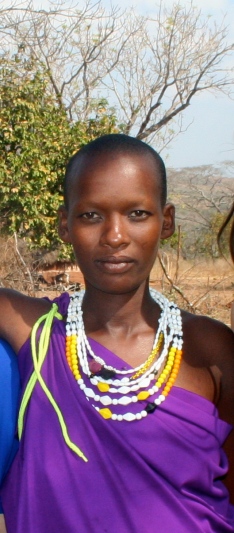

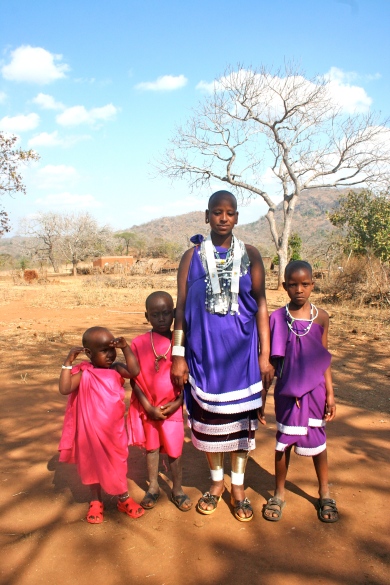


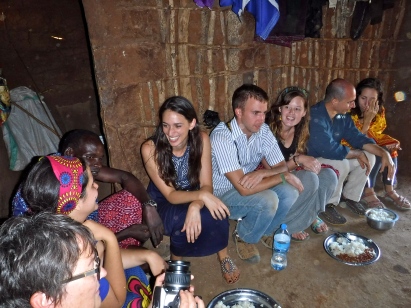
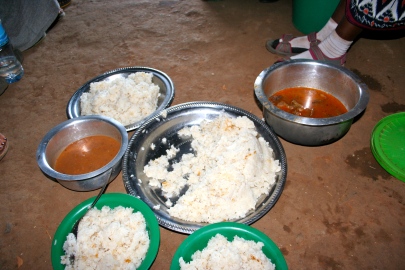

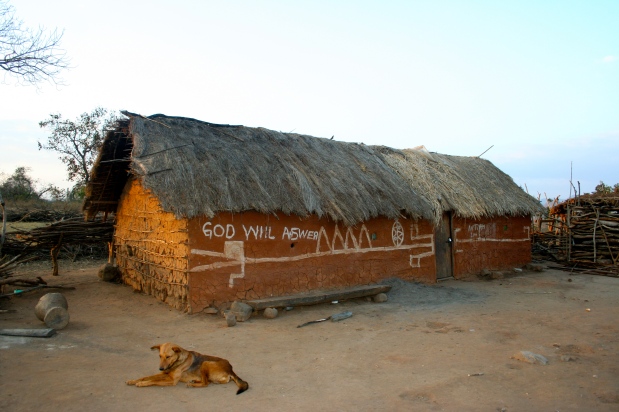

Through your words and photos I was able to spend the day with you in the village of Ifunde, Tanzania.
LikeLike
Oh good, that’s what I was going for. Miss you cuz! Ciao, ciao!
LikeLike
good job!! enjoying your travels. always have questions and more questions!
want to know about textiles, content and origins,
want to know about beads, origins, content and manufacture (glazes, firing, etc)
sigh, too many questions!
is there any way to send things you might need?
read any good books lately?
just start #3 iron druid, and 3 others.
be well
LikeLike
What a beautiful poem! Somehow, the meaning seems elevated with your narration of the Massai experience you had.
LikeLike
Just got all caught up with your posts. Great stuff, M!! I like your style! And really great pix too — I love the hawk in the tree and the killer sunset on the hillside … and so many pix of precious kids. What a great adventure! Looking forward to continuing the vicarious ride-along!
LikeLike
Herb – I miss you teaching next door to me! We could have some fun here!
LikeLike